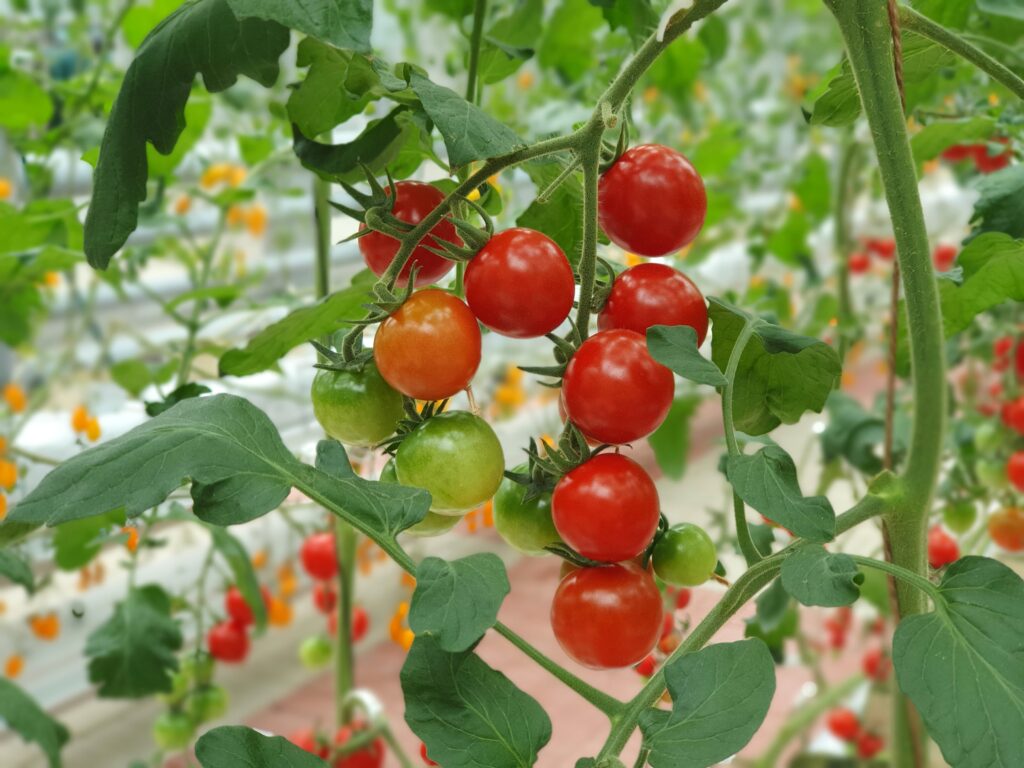Introduction
The vibrant and versatile vegetable, tomato is a staple ingredient of Indian cuisine. Tomatoes are necessary for boosting the flavors of numerous cuisines, and they are also used in curries, salads, or chutneys. If you’re a dedicated gardener hoping to develop a plentiful tomato harvest in India, then you’ve come to the right place. In this comprehensive guide, we’ll look at seven crucial suggestions that will help you produce the highest-yielding tomatoes under India’s varied climatic circumstances.
Tips to get the best tomato yield in India
Here are 7 tips to get the Best Tomato Yield in India. If you are a dedicated gardener, you can consider these tips to enhance your crop yield:
-
Choose the Right Tomato Varieties
The first step to a great crop is choosing the right tomato variety. Tomato cultivars that can grow in a variety of climates are required for India’s many climatic zones. Choose heat-tolerant types like “Pusa Ruby,” “Arka Rakshak,” or “Sakthi” if you live in a place with a hot, humid environment, such as a seaside area. Consider the ‘Pusa Early Dwarf’ and ‘Pusa Ruby’ for milder climates due to their tolerance to lower temperatures.
-
Optimal Seed Starting and Transplanting
Give your tomato seeds a good start to start your tomato journey. Six to eight weeks before the final anticipated frost date, start seedlings inside. Use a top-notch seed starting mixture and give the seeds enough warmth and light to germinate. When your seedlings have robust stems and a couple of sets of genuine leaves, transplant them outside. After your region’s final date of frost, transplanting should be done.
-
Provide Proper Support and Pruning
As they develop, tomato plants may become hefty and spread, so adequate support is crucial. To keep tomato plants erect and protect the fruit from reaching the ground, where it might rot, stake or cage them. Remove the suckers that develop in the leaf axils to regularly trim the plants. This promotes improved air circulation, lowers the danger of illness, and focuses the plant’s energy on producing fruit.
-
Soil Preparation and Fertilization
Tomatoes grow best on rich, well-draining soil that ranges in pH from 6.2 to 6.8 (slightly acidic to neutral). To ascertain the nutrient levels and apply the appropriate amendments, do a soil test. Compost, or well-rotted manure, is a good organic material to add to the soil to increase fertility and structure. To promote blooming and fruiting, think about applying a balanced fertilizer with greater concentrations of phosphate and potassium.
-
Watering Techniques
For healthy tomato plants, consistent and regular watering is essential. Avoid overhead watering since it might cause illnesses to spread. Choose soaker hoses or drip irrigation, which both direct water to the soil. Deeply water the plants, making sure the soil is always wet but not soggy. Maintain consistent moisture levels during the blooming and fruiting phases to avoid problems like blossom end rot.
-
Pest and Disease Management
Tomatoes are vulnerable to a number of pests and diseases, but with careful management, their effects may be reduced. Be on the lookout for typical pests like tomato hornworms, whiteflies, and aphids. Pest populations can be managed with the aid of neem oil, insecticidal soap, and the introduction of beneficial insects. Apply fungicides preventively, rotate your crops, and space your plants properly to prevent diseases like early blight and late blight.
-
Mulching and Weed Control
Mulching has several advantages for tomato plants. Around the base of the plants, spread a layer of organic mulch, such as straw or chopped leaves. Mulch promotes consistent soil temperatures, inhibits weed development, and preserves soil moisture. Regular weeding is necessary to make sure your plants receive the nutrients and water they require for healthy growth since weeds can compete with tomatoes for these resources.
Bonus Tip: Prudent Harvesting
Your tomatoes will have the optimum flavor and quality if you harvest them at the correct time. In general, ripe tomatoes should have a lively color and yield slightly under gentle pressure. However, various kinds will display varying signals of maturity. When harvesting, take care not to harm the plants. If, towards the end of the season, you come across green, unripe tomatoes, think about using them in pickles or chutneys.
Conclusion
It takes a mix of careful planning, meticulous care, and smart tactics to grow a successful tomato crop in India. You may have a plentiful harvest of delectable, homegrown tomatoes by choosing acceptable types, offering ideal growth conditions, managing pests and diseases, and adhering to responsible harvesting procedures. Keep in mind that gardening is a lifelong learning process, and every season offers fresh perspectives on how to improve your abilities. You’re well on your way to getting the best tomato yield in India‘s varied climate if you use these seven-pointers as your guide. Enjoy your garden!


Maximizing tomato yield in India involves selecting the right varieties, optimizing soil health, and implementing effective irrigation and pest management. These tips ensure a bountiful and healthy harvest. 🍅🌿 #TomatoFarming #AgricultureTips